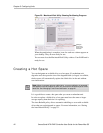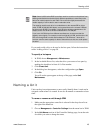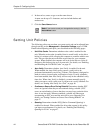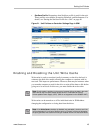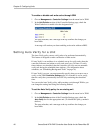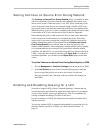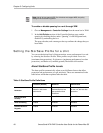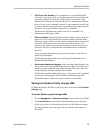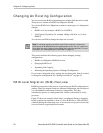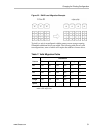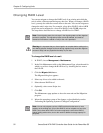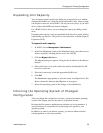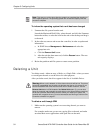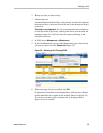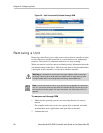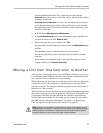
Chapter 5. Configuring Units
50 3ware Serial ATA RAID Controller User Guide for the Power Mac G5
Changing An Existing Configuration
You can convert one RAID configuration into another while the unit is online.
This process is known as RAID Level Migration (RLM).
You can use RAID Level Migration to make two main types of configuration
changes:
• RAID Level (for example, a RAID 1 to a RAID 5)
• Unit Capacity Expansion (for example, adding a 4th drive to a 3-drive
RAID 5)
You can also use RLM to change the stripe size of a unit.
This section includes the following topics about changing existing
configurations:
• RAID Level Migration (RLM) Overview
• Changing RAID Level
• Expanding Unit Capacity
• Informing the Operating System of Changed Configuration
If you want to change the policy settings for an existing unit, there is no need
to change the configuration. See “Setting Unit Policies” on page 44.
RAID Level Migration (RLM) Overview
RAID level migration is the process of converting one RAID configuration to
another. When you migrate a unit to a different configuration, the user data on
it is redistributed to the format of the new configuration. This data
redistribution process is a background task, similar to the rebuild or verify
processes.
Figure 22 shows an example of how data is reconfigured during a migration.
In this example, the migration is from a 3-drive RAID 0 to a 4-drive RAID 5,
with both having the same stripe size. As can be seen, every piece of user data
is moved from its original physical location.
Note: A unit being migrated can still be used (I/O still continues), however the
performance will be affected while the migrating task is active. You can control how
much effect this has on performance by setting the background task rate. For more
information, see “Setting Background Task Rate” on page 112.



